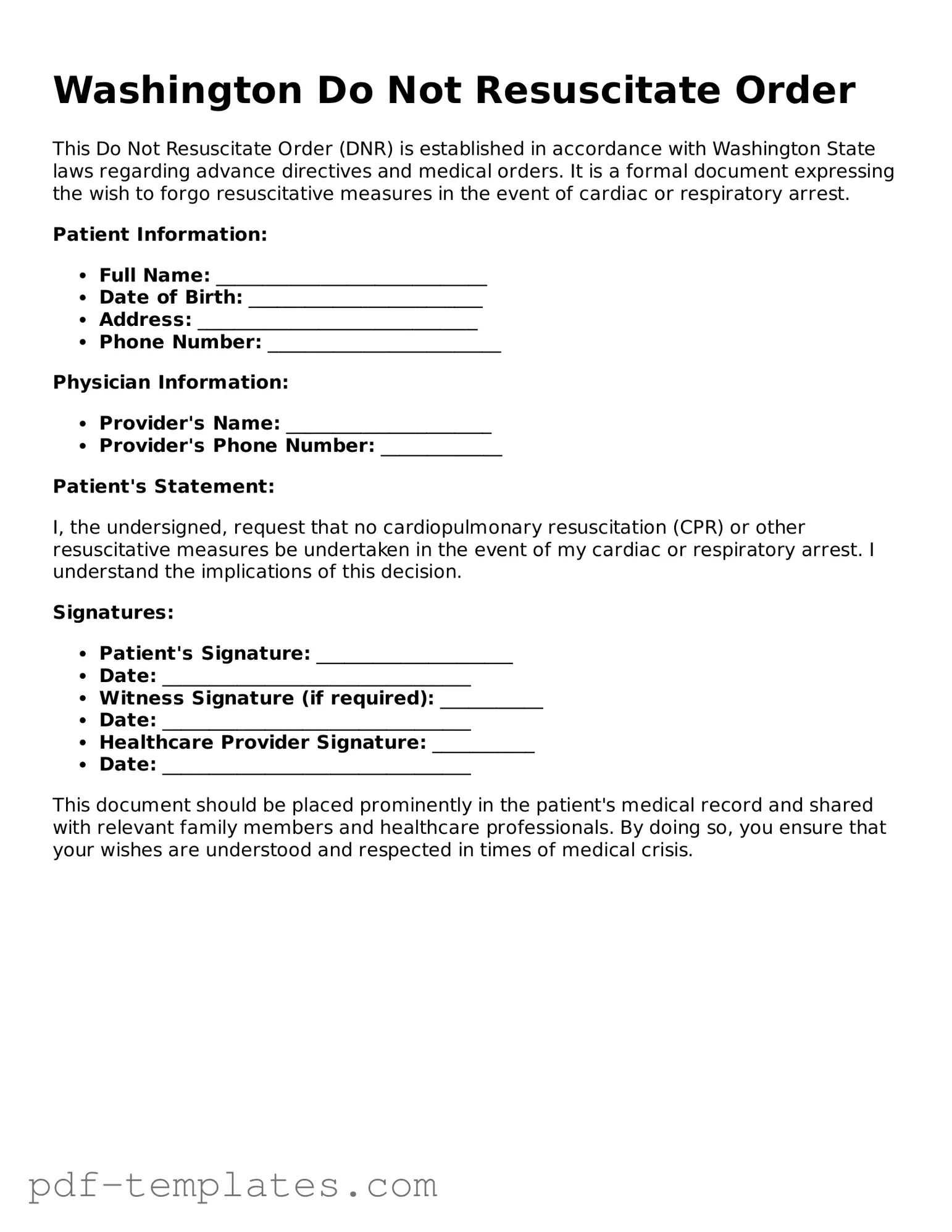The Advance Directive is a legal document that allows individuals to outline their healthcare preferences in advance. Like the Washington Do Not Resuscitate Order, it provides guidance to medical professionals and family members about a person's wishes regarding life-sustaining treatments. Both documents aim to respect the individual’s choices in critical situations, ensuring that their preferences are honored even if they are unable to communicate them at the time of care.
A Living Will is another important document that shares similarities with the Do Not Resuscitate Order. It specifies the types of medical treatments an individual wishes to receive or avoid in the event of a terminal illness or incapacitation. While the DNR focuses specifically on resuscitation efforts, the Living Will covers a broader range of medical interventions, providing a comprehensive view of a person’s healthcare desires.
The Physician Orders for Life-Sustaining Treatment (POLST) form is designed for individuals with serious health conditions. This document goes beyond the Do Not Resuscitate Order by detailing specific medical treatments a patient wishes to receive or decline. POLST is actionable and must be followed by healthcare providers, ensuring that a patient’s preferences are respected in emergency situations.
In understanding the nuances of property transfer, it is essential to recognize that a California Quitclaim Deed form provides a quick and efficient means of transferring real estate interest, primarily among family members or in situations needing title clarification. Such a process often lacks the guarantees associated with other deed forms, making it critical for individuals involved to be aware of the implications. For those seeking comprehensive documentation, you can access All California Forms to facilitate your property transactions.
The Health Care Proxy allows an individual to designate someone to make medical decisions on their behalf if they are unable to do so. This document complements the Do Not Resuscitate Order by providing a trusted person with the authority to interpret and act on the individual’s wishes, ensuring that their healthcare preferences are communicated and honored.
The Do Not Intubate (DNI) Order is closely related to the Do Not Resuscitate Order. It specifically instructs healthcare providers not to perform intubation, which is the placement of a tube to assist with breathing. Both documents reflect a patient’s wishes about life-sustaining measures, emphasizing the importance of respecting personal choices in critical medical situations.
The Comfort Care Order focuses on providing relief from pain and other distressing symptoms without attempting to prolong life. This document aligns with the intentions of the Do Not Resuscitate Order, as both aim to prioritize the quality of life over aggressive medical interventions. Comfort Care Orders ensure that patients receive compassionate care in their final days, aligning with their values and preferences.
